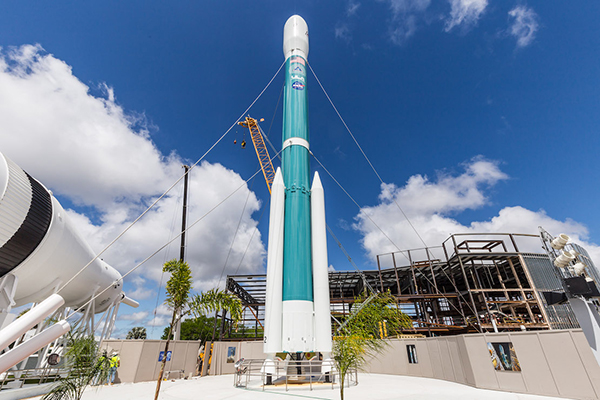The last United Launch Alliance Delta II rocket joins the lineup of historic launch vehicles in the Rocket Garden at the Kennedy Space Center Visitor Complex in Florida on March 23, 2021.

Delta II Rocket (Image Credit: NASA/Kim Shiflett)
The Delta II appeared Tuesday (March 23) in the rocket garden at NASA’s Kennedy Space Center Visitor Complex in Florida. The expansion of the resigned United Launch Alliance (ULA) rocket denoted the main “development” to the guest complex’s assortment of noteworthy sponsors in numerous years.
“It has been a long while since we have had the option to place another rocket in the nursery, and to have one that is essentially late is a genuine feature,” – Therrin Protze, the head working officer of the Kennedy Space Center Visitor Complex, said in a meeting. “It appears to be very unique than the others. It truly hangs out in its radiant tone.”
Presently remaining among the generally high contrast rockets from the early-long stretches of U.S. space investigation, the Delta II, with its brand name “Delta Blue” finish, addresses the business workhorse that took off multiple times — 100 on back to back fruitful missions — from 1989 to 2018. The Delta II lobbed tests to the moon and Mars set galactic observatories into Earth circle and conveyed the principal Global Positioning System (GPS) satellites.
“The Delta II in plain view addresses a dispatch vehicle that truly fulfilled a ton of abilities for the world,” said Ron Fortson, chief and senior supervisor of dispatch tasks for ULA. “For space investigation, it dispatched a ton of missions to Mars: two meanderers, Spirit and Opportunity; Mars Odyssey; and the Phoenix lander, all dispatched on Delta II. There is such an excess of science that we have learned due to the Delta II.”
“At that point from a military viewpoint, GPS is immense. I can’t envision the world being without GPS, and basically, Delta dispatched the group of stars,” Fortson said. “Also, from the business point of view, there were Iridium satellites, Global Star and Digital Globe. There is a ton of business correspondence [capabilities] that were given by the Delta II.”
Gazing toward the 132-foot-tall (40 meters) Delta II, guests to the Kennedy Space Center will see the “shark’s teeth” nose craftsmanship on the rocket’s fairing. The Delta II presently remains in the nursery approaches the nose of the Apollo-period Saturn IB, the following latest rocket among the showcases. Delta II’s RS-27 motor offers a legacy with the H-1, which controlled the fundamental phases of the Saturn IB.
Different rockets showed in the nursery incorporate Juno I, Juno II, Atlas-Agena, Mercury-Redstone, Mercury-Atlas, and Gemini-Titan II. Likewise showed is a Thor-Delta, the principal individual from the Delta rocket family tracing all the way back to 1960. The Delta II was the remainder of the Delta rockets to fly utilizing equipment with an immediate ancestry to the first Thor ballistic rocket.
ULA originally promised the Delta II to the Kennedy Space Center Visitor Complex not exactly an hour after the last Delta II to dispatch left the ground. The rocket was ready for its outside show by Penwal Industries prior to being sent cross country by truck. The primary pieces showed up in Florida in late February.
“The coordination with ULA has quite recently been exceptional,” said Protze. ULA worked really hard working with their subcontractors to make the Delta II genuinely shimmer in the rocket garden.
“That blue rocket out there, it truly changed the world,” Fortson said.
Suggested Reading: Supermassive Black Hole and the swirling magnetic field
Author